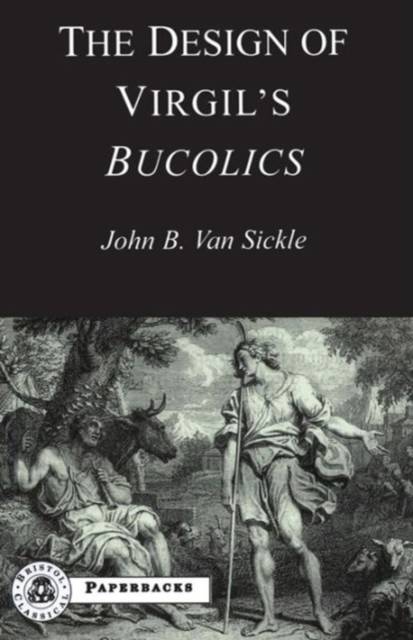
Bedankt voor het vertrouwen het afgelopen jaar! Om jou te bedanken bieden we GRATIS verzending (in België) aan op alles gedurende de hele maand januari.
- Afhalen na 1 uur in een winkel met voorraad
- In januari gratis thuislevering in België
- Ruim aanbod met 7 miljoen producten
Bedankt voor het vertrouwen het afgelopen jaar! Om jou te bedanken bieden we GRATIS verzending (in België) aan op alles gedurende de hele maand januari.
- Afhalen na 1 uur in een winkel met voorraad
- In januari gratis thuislevering in België
- Ruim aanbod met 7 miljoen producten
Zoeken
€ 81,45
+ 162 punten
Omschrijving
In 1986, reviewing recent work on the Bucolics, William S. Anderson wrote, 'Van Sickle, Design, has produced the most persuasive portrait of the Eclogues, arguing cogently for what he calls an "ideological order".' The Design of Virgil's Bucolics argues that Virgil composed his ten eclogues as parts of a system: the Book of Bucolics conceived as a concerted whole. The report of frequent theatre presentations showed that Virgil caught attention withdramatic flair, masking an ideological programme that grew to encompass motifs of a returning Golden Age and new myth, providing cover for the Caesarist regime, casting the poet as a prophet, vates, and laying groundwork for the Georgics and Aeneid.
Design argues, too, that ideology implied a poetic programme and that bucolic drama was metapoetic, starting with the discovery that already the first eclogue rewrote Theocritus with metapoetic point, despite the scholarly fad that styled Virgil's programme as Callimachean and postponed it to the sixth eclogue. Each eclogue in factmade a distinct contribution, the tenth complementing the newpolitical mythology of the first half book with the new myth of Arcadian poetics.
An extensive new Introduction to this second edition reviews developments and shortfalls in recent work on the Bucolics.
Design argues, too, that ideology implied a poetic programme and that bucolic drama was metapoetic, starting with the discovery that already the first eclogue rewrote Theocritus with metapoetic point, despite the scholarly fad that styled Virgil's programme as Callimachean and postponed it to the sixth eclogue. Each eclogue in factmade a distinct contribution, the tenth complementing the newpolitical mythology of the first half book with the new myth of Arcadian poetics.
An extensive new Introduction to this second edition reviews developments and shortfalls in recent work on the Bucolics.
Specificaties
Betrokkenen
- Auteur(s):
- Uitgeverij:
Inhoud
- Aantal bladzijden:
- 280
- Taal:
- Engels
- Reeks:
Eigenschappen
- Productcode (EAN):
- 9781853996764
- Verschijningsdatum:
- 24/12/2004
- Uitvoering:
- Paperback
- Formaat:
- Trade paperback (VS)
- Afmetingen:
- 142 mm x 215 mm
- Gewicht:
- 362 g

Alleen bij Standaard Boekhandel
+ 162 punten op je klantenkaart van Standaard Boekhandel
Beoordelingen
We publiceren alleen reviews die voldoen aan de voorwaarden voor reviews. Bekijk onze voorwaarden voor reviews.









